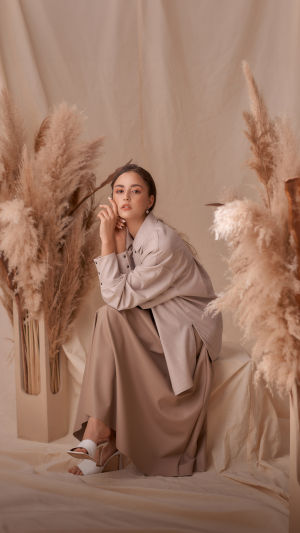Have you ever watched someone step in front of a camera and just seem to own the moment? They know exactly how to pose, hold themselves, and express emotion. It's like they have a natural "camera presence," right?
But the truth is, "camera presence" isn't something that people are born with. It's something we can all develop through training and practice.
In this article, let's explore how we can all improve our camera skills and why it's not as mysterious as it might seem.
<h3>What is "Camera Presence"? </h3>
When we talk about "camera presence," we're referring to how comfortable, confident, and natural someone looks on camera. It's the ability to capture the viewer's attention, whether you're in a photo, video, or even just a quick selfie. You've probably seen it in movies, TV shows, or even social media influencers—some people just seem to know how to shine in front of the camera.
It's important to understand that camera presence doesn't just happen. Sure, some people might feel naturally at ease in front of a camera, but for most of us, it's something we need to practice. Just like any skill, learning to express ourselves in front of a camera takes time, effort, and focus.
<h3>Why Training Makes All the Difference</h3>
We all know that practice makes perfect. Whether it's playing an instrument, mastering a sport, or learning a new language, consistent practice is key. The same principle applies to building camera presence. You don't need to be a professional model or actor to develop this skill. With the right approach and practice, we can all become more comfortable in front of the lens.
Training to improve our camera presence involves more than just "looking good" on camera. It's about learning how to control our posture, our expressions, and our energy. If we've ever felt awkward or stiff in front of a camera, it's likely because we weren't aware of these elements. With practice, we can start to feel more at ease and convey the right emotions more naturally.
<h3>Improving Posture and Body Language</h3>
One of the key elements to improving our camera presence is understanding how to use our body. Posture plays a huge role in how we come across on camera. Standing or sitting up straight can make us appear more confident and engaged, while slouching can give off a completely different vibe.
We've all seen photos or videos where someone seems to be "closed off," like their arms are crossed or they're looking down.
This kind of body language can send a message of insecurity or detachment. In contrast, open body language—such as standing tall, keeping shoulders back, and even using our hands while speaking—can make us look more confident and approachable. Practicing different poses in front of a mirror or with a camera can help us find what works best for us.
<h3>Mastering Facial Expressions</h3>
Have you ever watched a video of yourself and noticed that your facial expression doesn't match your words? Maybe you were smiling while talking about something serious, or your face appeared blank while telling a funny story. Our facial expressions are incredibly important when it comes to camera presence, as they help convey the message we want to share.
To develop this aspect of our camera presence, it's helpful to practice controlling our facial expressions. It might feel a little awkward at first, but over time, we can learn to match our emotions with the right facial expressions. Whether we're smiling for a photo, being serious during an interview, or even trying to appear more relaxed for a casual vlog, practicing in front of a mirror or camera can make a huge difference.
<h3>Finding Your "On-Camera Energy"</h3>
Another key factor in developing camera presence is finding the right level of energy. Some people have an energetic, larger-than-life presence on camera, while others may be more subdued and calming. Neither is better than the other—it's all about finding what works for you and your message.
When we're on camera, we often feel the pressure to be "on" all the time. But the reality is, authenticity plays a huge role in how we connect with our audience. Sometimes, being genuine and relaxed is the best approach. To improve this aspect, we can experiment with different energy levels, from high-energy and enthusiastic to calm and composed, and see which feels the most natural for us.
<h3>Practice Makes Confidence</h3>
The good news is that we can all improve our camera presence with consistent practice. The more we step in front of a camera, the more comfortable and confident we'll become. Even just recording ourselves talking, practicing different poses, or trying out various facial expressions can make a big difference. Over time, we'll start to notice improvements in how we present ourselves on camera.
It's also helpful to get feedback from others. Whether it's friends, family, or even an online community, getting feedback can help us refine our presence and identify areas for improvement.
<h3>In Conclusion: Camera Presence is Trainable</h3>
So, next time you feel uncomfortable in front of a camera, remember that camera presence isn't something you're born with—it's something we can all improve through training. With practice, attention to detail, and a little patience, we can all develop the ability to look confident, natural, and engaging on camera. Whether you're filming a vlog, participating in an online meeting, or just taking a photo, your camera presence will make a difference in how you're perceived.
Now it's your turn—how comfortable are you in front of the camera? Have you ever worked on improving your camera presence? Let's chat about how training has helped you or what tips you've found useful for looking and feeling your best on camera!





